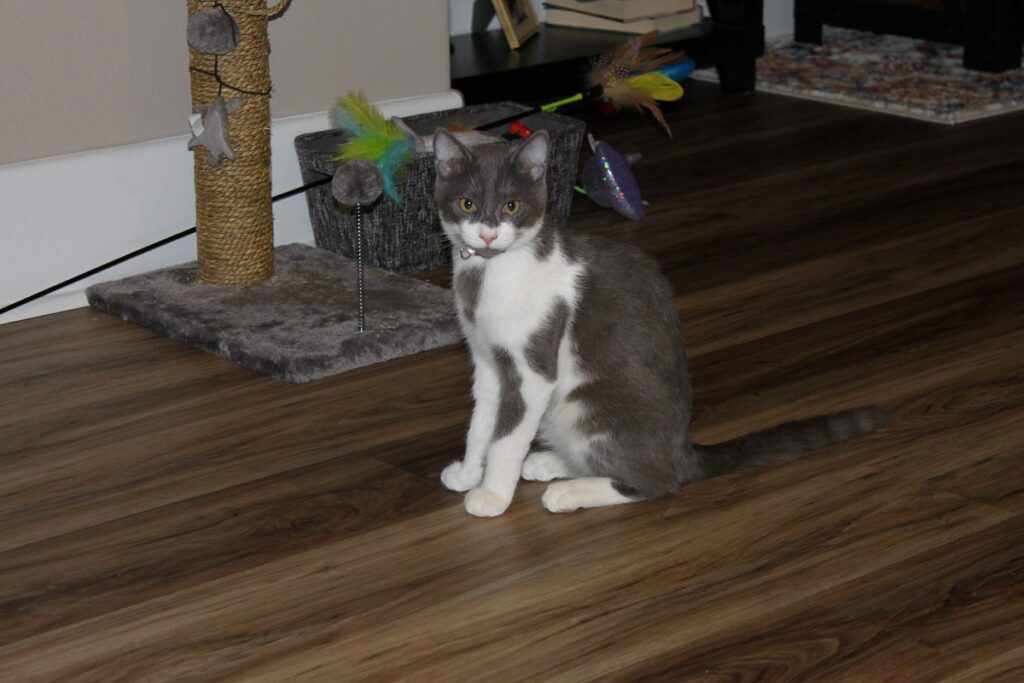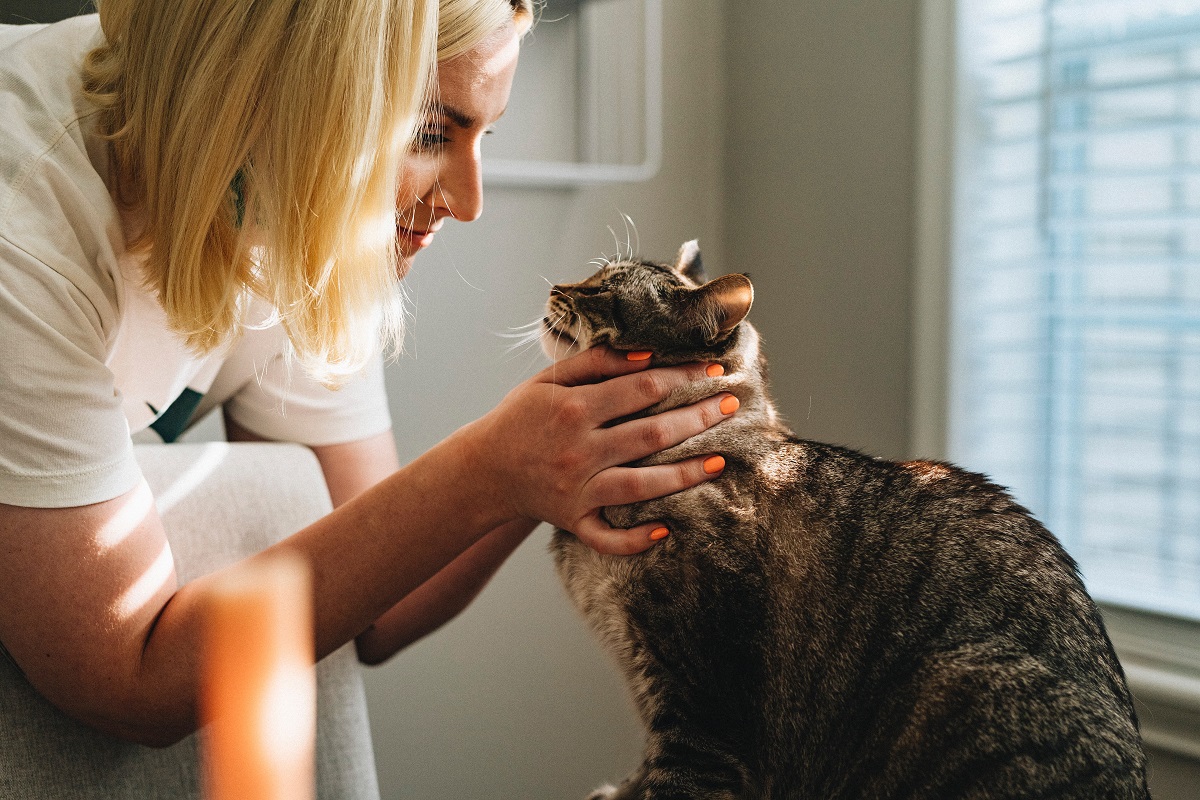Cats are enigmatic creatures, often leaving their owners puzzled by their behaviors. From sudden bursts of energy at odd hours to inexplicable aversions to certain areas of the house, feline actions can sometimes be challenging to interpret. When these behaviors become problematic or disrupt the harmony of the household, it may be time to consult a professional. Enter the cat behaviorist—a specialist dedicated to understanding, interpreting, and modifying feline behavior to enhance the well-being of both cats and their human companions.
What Is a Cat Behaviorist?
A cat behaviorist is a professional trained to observe, analyze, and modify feline behaviors. They address a range of issues, including:
- Aggression: Unprovoked attacks on humans or other animals.
- Anxiety: Excessive hiding, vocalization, or destructive behavior.
- Litter Box Issues: Urinating or defecating outside the designated area.
- Compulsive Behaviors: Over-grooming, pacing, or repetitive actions.
- Destructive Scratching: Damaging furniture or other household items.
By assessing the cat’s environment, history, and interactions, behaviorists develop tailored strategies to resolve behavioral challenges, ensuring a harmonious relationship between the cat and its owner.
The Evolution of Feline Behaviorism
Historically, cats were perceived as independent creatures whose behaviors were enigmatic and unchangeable. Unlike dogs, which have a long history of training and domestication, cats were often left to their own devices. However, as cats became more integrated into household settings, the need to understand and address their behaviors grew. This shift led to the emergence of feline behaviorism as a specialized field, focusing on the unique psychological and environmental needs of cats.
The late Carole Wilbourn, known as “The Cat Therapist,” was a pioneer in this field. Over her 50-year career, she combined her knowledge of human psychology with her passion for felines, offering insights into cat behavior and therapy. Her work laid the foundation for modern cat behaviorism, emphasizing the importance of understanding the emotional and psychological needs of cats.
Educational Pathways and Certifications
Becoming a cat behaviorist typically involves a combination of formal education and practical experience. Many professionals start with degrees in fields like animal behavior, psychology, or veterinary medicine. Advanced certifications, such as those from the Animal Behavior Society (ABS), require rigorous training and adherence to ethical standards. It’s essential to verify a behaviorist’s credentials to ensure they have the appropriate expertise.
In addition to formal education, hands-on experience is crucial. Programs like the Animal Behavior College’s Cat Training Program offer comprehensive curricula that include both online coursework and shelter experience. Such programs ensure that aspiring behaviorists are well-equipped to handle a variety of feline behavioral issues.
When Should You Consult a Cat Behaviorist?
Recognizing when to seek professional help can make a significant difference in addressing behavioral issues effectively. Consider consulting a behaviorist if your cat exhibits and of the previously mentioned issues: aggression, anxiety, litter box issues, compulsive issues like over-grooming, or destructive scratching.
Early intervention can prevent these behaviors from becoming ingrained habits. For instance, a case study published by the International Association of Animal Behavior Consultants detailed how a cat named Barney exhibited human-directed aggression. Through targeted interventions, including environmental enrichment and training, Barney’s behavior improved significantly.
The Consultation Process
Engaging a cat behaviorist typically involves several steps:
Related read: Why Your Kitten Keeps Ignoring the Scratching Post.
- Initial Assessment: The behaviorist gathers information about your cat’s history, environment, and specific issues.
- Observation: They may observe your cat in its home setting to identify triggers and patterns.
- Diagnosis: Based on observations, the behaviorist identifies underlying causes of the problematic behavior.
- Intervention Plan: A customized strategy is developed, which may include environmental modifications, training exercises, and recommendations for the owner.
- Follow-Up: Regular check-ins to monitor progress and make necessary adjustments to the plan.
This structured approach ensures that interventions are tailored to the individual cat’s needs, leading to more effective outcomes.
Techniques and Approaches
Cat behaviorists employ various methods to address behavioral issues:
- Positive Reinforcement: Rewarding desired behaviors to encourage repetition. For example, if a cat uses a scratching post instead of furniture, offering a treat reinforces this behavior.
- Environmental Enrichment: Introducing toys, climbing structures, and interactive play to reduce boredom and stress. This approach not only alleviates behavioral issues but also enhances the cat’s overall well-being.
- Desensitization: Gradually exposing the cat to stressors to diminish negative reactions. This technique is particularly useful for cats that exhibit fear-based behaviors.
- Counter-Conditioning: Changing a cat’s emotional response to a stimulus by associating it with positive experiences. For instance, if a cat is fearful of strangers, pairing the presence of a stranger with treats can help alter the cat’s perception.
These strategies are tailored to each cat’s unique personality and circumstances, ensuring that interventions are both effective and humane.
Collaborating with Veterinarians
Behavioral issues can sometimes stem from medical problems. For instance, a cat urinating outside the litter box might have a urinary tract infection. Cat behaviorists often work closely with veterinarians to rule out or address medical conditions before implementing behavioral interventions. This collaborative approach ensures that all potential causes of behavioral issues are considered and addressed appropriately.
The Importance of Owner Education
A significant part of a behaviorist’s role is educating cat owners. Understanding feline body language, communication cues, and natural instincts enables owners to foster a harmonious relationship with their pets. This knowledge empowers owners to prevent potential issues and create a supportive environment for their cats.
For example, recognizing signs of stress or anxiety in cats can help owners intervene before these feelings manifest as behavioral problems. Additionally, understanding the importance of play and mental stimulation can lead to more engaged and contented cats.
Finding the Right Behaviorist
When selecting a cat behaviorist, consider the following:
- Credentials: Look for certifications from reputable organizations.
- Experience: Inquire about their experience with issues similar to yours.
- Approach: Ensure their methods align with your preferences and prioritize the cat’s well-being.
- Reviews: Ask for testimonials or check online reviews from previous clients to get an idea of the behaviorist’s success rate and client satisfaction.
- Consultation Style: Some behaviorists work in-person, while others offer remote consultations. Choose the format that best fits your cat’s needs and your comfort level.
It’s also worth scheduling an initial call or consultation to ensure a good fit. Like cats, behaviorists have different personalities and approaches, and a strong working relationship can be key to success.

I’ve got to tell you, these cat behaviorists are quite a hoot! One minute they’re watching me play with a toy mouse, scribbling notes like I’m performing some feline Shakespeare, and the next, they’re trying to figure out why I’ve decided the top of the fridge is my new favorite nap spot. Humans, right? Always needing a ‘plan’ for my spontaneous genius! But I guess it’s nice to be the center of attention… until they bring out that dreaded carrier for a vet visit. Personally, I prefer to keep them guessing. #LifeOfAKitten #CatBehavioristChronicles #TopOfTheFridgeClub
Joey
Myths and Misunderstandings About Cat Behaviorists
Despite the growing awareness of feline behavioral health, a few myths still persist:
“Cats can’t be trained.”
This is probably the most common myth. While they’re not as eager-to-please as dogs, cats can absolutely be trained using reward-based methods. They can learn commands, accept carriers, and even walk on a leash.
“Behaviorists are only for aggressive cats.”
Aggression is just one of many issues a behaviorist can address. They also help with anxiety, fearfulness, socialization, compulsive behaviors, and even boredom-related mischief.
“My cat will grow out of it.”
Some cats do outgrow behaviors as they mature, but others don’t. Waiting too long can allow bad habits to take root, making them harder to correct later.
“It’s just a personality issue.”
While temperament plays a role, many behavior problems have underlying causes that can be modified or managed with the right plan.
Breaking these misconceptions helps more cat owners seek the help their feline companions truly need.
What Cat Behaviorists Don’t Do
It’s just as important to understand what a cat behaviorist doesn’t do:
- They’re not veterinarians. They can identify when a medical check-up is needed, but they don’t diagnose or treat physical illnesses.
- They don’t use punishment-based methods. Ethical behaviorists use force-free, science-based techniques focused on trust and cooperation.
- They won’t “fix” a cat overnight. Behavioral change takes time, consistency, and teamwork between the behaviorist and the cat’s guardian.
If a behaviorist offers quick fixes or suggests dominance-based approaches, it’s a red flag.
Benefits Beyond Behavior
Working with a cat behaviorist isn’t just about solving problems. It also has broader benefits:
- Reduces stress for both cat and owner
- Prevents rehoming or surrender due to unmanageable behavior
- Improves your bond with your cat
- Builds confidence in shy or fearful cats
- Enhances quality of life through environmental enrichment and understanding
The impact goes far beyond a specific issue. It can completely transform your relationship with your cat.
What It’s Like to Live with a Cat After Working with a Behaviorist
Many cat owners report dramatic positive changes after working with a behaviorist. Their once reclusive cat now curls up beside them on the couch. The serial furniture destroyer now uses the scratching post like a pro. The litter box avoider now never misses.
But even better than the behavior changes is the improved communication. You’ll learn to read your cat’s signals, understand their needs, and set up your home in a way that supports both of you.
One client described their journey like this: “I didn’t realize how stressed my cat was until I saw how relaxed she could be. The behaviorist didn’t just help her, they helped me become a better cat parent.”
How Much Does a Cat Behaviorist Cost?
The cost of hiring a behaviorist varies based on location, experience, and the nature of the issue. Here’s a rough breakdown:
- Initial consultation: $100–$300
- Follow-up sessions: $50–$150 each
- Comprehensive packages: $300–$600 for multi-session plans with support
Some offer online-only sessions at a lower rate, which can be a good option for simple issues. It’s always wise to ask what’s included. Some will offer written behavior plans, email follow-up, or even video demonstrations.
While it may seem like a significant investment, it’s often less than the long-term cost of damaged furniture, medical bills, or the emotional toll of living with unresolved stress.
Tips for Success When Working with a Behaviorist
If you’ve decided to work with a cat behaviorist, here are a few tips to get the most out of it:
- Be honest. Share everything, even the embarrassing stuff. It helps them create an accurate picture.
- Be consistent. Follow the plan as closely as possible.
- Be patient. Progress may be gradual, especially with deeply rooted habits or fearful cats.
- Track changes. Keep a journal of behaviors and improvements so you can celebrate small wins.
- Ask questions. A good behaviorist welcomes your curiosity.
You’re not just hiring a coach for your cat. You’re entering a learning partnership.
Final Thoughts
Living with a cat should bring joy, not frustration. A cat behaviorist can be the bridge between confusion and clarity, helping you understand your cat’s world and improving life for both of you. Whether you’re dealing with biting, hiding, or just baffling behavior, expert guidance can make all the difference. Sometimes, the best thing you can do for your cat is get a little help understanding them.
Sources:
– Cornell Feline Health Center https://www.vet.cornell.edu/departments-centers-and-institutes/cornell-feline-health-center
– American College of Veterinary Behaviorists https://www.dacvb.org
– International Association of Animal Behavior Consultants (IAABC) https://m.iaabc.org
– PetMD – What Is a Cat Behaviorist? https://www.petmd.com/cat/behavior/what-cat-behaviorist
– ASPCA – Behavior Issues https://www.aspca.org/pet-care/cat-care/common-cat-behavior-issues
– The Guardian – Can You Train an Angry Cat to Be More Sociable? https://www.theguardian.com/lifeandstyle/2025/mar/30/she-treats-everyone-with-a-deep-growl-can-you-train-an-angry-cat-to-be-more-sociable
– Animal Behavior College – Cat Training Program https://www.animalbehaviorcollege.com/cat-training
– Carole Wilbourn – The Cat Therapist https://thecattherapist.com
Recent Posts
Explore why cats sleep so much, including the evolutionary reasons and the health benefits they derive from their extensive sleep patterns.
Explore the causes of cat dandruff, its implications, and effective ways to deal with it so your feline friend remains happy and healthy.


